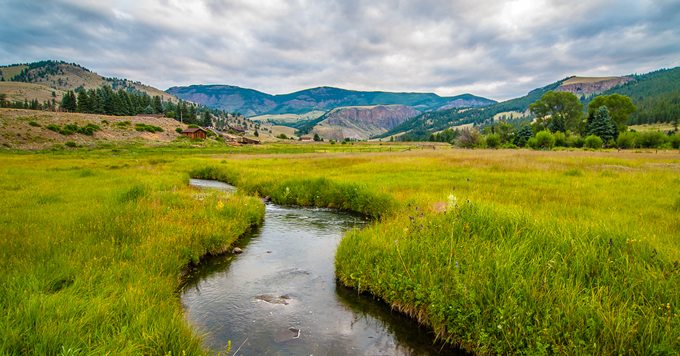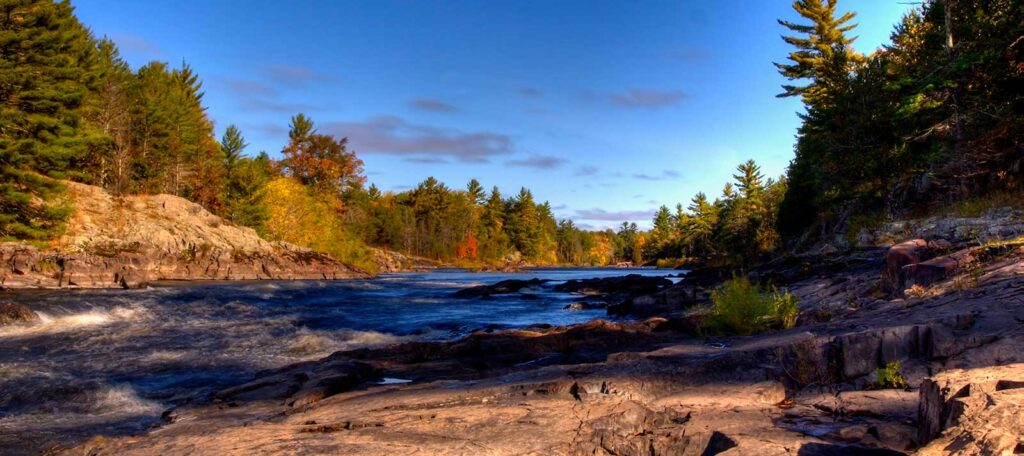The Big Picture of Colorado’s Water Plan – Two Years In
Join us this week on our podcast, We Are Rivers as we dive into the first of our podcast series on the Colorado Water Plan. Join us in Episode 6: The Big Picture of Colorado’s Water Plan.

Last week, the state celebrated the second anniversary of Colorado’s Water Plan. Over the last two years, the state has made solid progress funding grants to advance water projects and increase funding for stream management plans. However, the challenges identified in the plan are significant. A swelling population is stretching our water resources, and climate change is having an impact, by reducing flows on the Colorado River. We need to pick up the pace toward implementing all of the Plan’s water solutions if we are to reach our goal of securing clean reliable water for our communities, preserving our agricultural heritage, and protecting our rivers. Over the next few months, We Are Rivers will highlight the Colorado Water Plan through a series of episodes breaking down the opportunities, challenges, and successes to date from Colorado’s Water Plan. Join us for the first installment, as we look back at the last two years of the water plan and identify a sustainable path forward.
Growing up in New York, I envied the posters pinned up in my middle school hallways that honored Colorado landscapes like the Maroon Bells, Dinosaur National Monument, the Great Sand Dunes, and of course the Colorado River as it weaves through canyons and deserts. But moving to Colorado six years ago, tacking on to Colorado’s growing population, I haven’t exactly made life easier for the state’s water managers. Without the native badge, I empathize with the influx of people flooding into Colorado who have recreational fervor, career hopes, and of course adventure in mind, straining the West’s already overtapped water supply.
Colorado’s population is projected to double by 2050, with most of the growth occurring on the Front Range, where about 80% of the people live. With about 80% of the state’s water coming from west slope snowpack, the imbalance is striking. Additionally, like many other states across the Southwest, Colorado is experiencing higher temperatures, reduced precipitation, and earlier and faster runoff. With growing population and climate change impacts, how can Colorado work to close our gap in supply and demand? Through increased collaboration, dialogue, and efficiencies, the Colorado Water Plan sets out to address this grand dilemma.
The Colorado Water Plan sets a goal of conserving 400,000 acre-feet of municipal and industrial water by 2050. By 2025, if the Water Plan objectives are met, 75% of Coloradans will live in communities that have water-saving actions incorporated into land-use planning. Furthermore, by 2030, the plan sets out to A) re-use and share at least 50,000 acre-feet of water amongst agricultural producers, B) cover 80% of locally prioritized rivers with Stream Management Plans, and C) ensure 80% of critical watersheds with Watershed Protection Plans. In order for a project to utilize the Water Plan’s budget to meet these goals, the proposed conservation project must be appropriate in that it addresses real needs and is cost-effective, sustainable, and supported by local stakeholders.
The state has taken a great step forward by allocating $10 million per year for Water Plan Implementation grants. While this is a first step, we must further fund the plan’s broader strategies as well. Public investment in water projects must be smart, which starts with meeting all of the “criteria” in the Colorado Water Plan. Before any new, significant projects are proposed, the state should apply all of the Water Plan’s criteria in order to demonstrate that the state is committed to investing in (or endorsing) only projects that use public resources wisely, protect rivers and wildlife, and reflect community values. The last two years have seen state funding disproportionately spent on costly structural projects while sustainable, cost-effective methods, such as water reuse and flexible water-sharing agreements have been undervalued and underfunded. Creative conservation projects are essential in upholding the Water Plan to sustain the natural beauty of Colorado’s rivers and streams and ensure a safe and reliable drinking water supply.
However, it is important to note that there is nothing legally binding in the Water Plan that requires Colorado to abide by its outlined goals. Therefore, the success of the plan solely relies on the motivation of everyday people to work together as a community to hold politicians and basin roundtables accountable with respect to the plan. I encourage you to learn more about where your water comes from and what you can do as an individual to reduce your water consumption. We all need to work collaboratively to reduce our demand for water.
As we celebrate the second anniversary of Colorado’s Water Plan, we have an opportunity, and a responsibility to rally behind the premise of the Plan, keeping Colorado beautiful and sustainable for all. Join us over the next few months as we dive into the mechanics of Colorado’s Water Plan, and why it is so important to see it succeed.





7 responses to “The Big Picture of Colorado’s Water Plan – Two Years In”
IF TWO FORKS RESERVOIR: I.I MILLION ACRE FEET RESERVOIR WOULD BEEN BUILT BACK IN THE 80’S, WE WOULD NOT BE IN THE PREDICAMENT THAT WE ARE NOW IN. COLORADO CANNOT BUILD A WALL AROUND ITS BOUNDARIES TO KEEP OUT PEOPLE. GET THE POLITICS OUT OF WATER, BE REALISTIC, BUILD MORE LARGE STORAGE FOR WATER, AS IN TWO FORKS. .
Rebecca:
Thank you for your response to my comments. Hopefully many people will read these exchanges and get a better understanding of the complicated water issues in our state.
While I fully understand that the Colorado Water Plan is not an enforceable document I would hope that it would bring about more in depth discussions and possible future negotiations to “improve” water law for the benefits of all entities, not just consumptive users as is now the norm for a state that has changed immensely since these laws were developed.
Without meaningful discussions about protecting our rivers and streams from over appropriations that will negatively affect their health, and relatedly our human health, we will lose out on the ability to protect one of, if not the most valuable, resource and asset this State has. I fear that our rivers in-stream flow parameters are far down the importance list when it comes to the water plan and how we provide water to growing populations.
While you state that CPW only does research on stream flow requirements when a specific request is made for the appropriation of an in-stream flow and does not know minimum stream flows for our streams, I have to disagree, as I have personally spoken to a senior fisheries biologist for the CPW and asked that specific question. He stated that the CPW knows what water flow parameters would be required to maintain a healthy stream environment on most of Colorado’s streams and rivers and I am also very aware that these parameters include not only minimum flows, but also necessary flushing and fish, insect and riparian reproductive flows. Your comment that no stream can survive long on just a “minimum” flow is well taken and underscores the critical need for all responsible entities to come together and discuss and revamp our States archaic water laws hopefully to reflect our States current needs as well as its quality of life goals for future generations.
I agree with your statement that Colorado must provide water for a growing population, but we must realize that if the States population would be allowed to grow at a steady rate for ever that is not a sustainable option with our limited resources and a limit would definitely be reached at some point in time. Just providing adequate water for a growing population does not address the other limits to a quality of life that pollution, congestion, infrastructure needs and negative mental health affects would instill.
The one parameter that can be established to guide and inform us all that we have reached that limit is our flowing water supply and if protecting and providing healthy rivers for future generations of Colorado residents and visitors is an important and essential goal then establishing minimal/optimal in-stream flows as the line we do not cross is the only mechanism I can see that will prevent us from making this State an unhealthy and unsafe place to live! I only hope we are wise enough to see this and diligently work toward that goal.
Dear David,
The Colorado Water Plan (CWP) was developed as a plan for the development of water in Colorado for all future needs, from stream and watershed health to municipal, industrial and agricultural needs. It is only a plan, not an enforceable legal document and as such has no authority over elements of Colorado water law such as instream flows. It is like a community master plan, a guidance document with advice on how we might achieve all of Colorado’s water needs and goals going forward.
As such the Water Plan cannot guarantee or insure anything. It does however lay a foundation from which competing interests can begin to work together in ways to help all of our needs, including the environment.
Colorado Parks & Wildlife (CPW) does not know minimum stream flow requirements on all of Colorado’s streams, let alone the minimum. They only do the research for those needs, and often for more than the minimum, when a request is made for the State to appropriate an in-stream flow for a specific reach of a particular stream. In-stream flow appropriations are filed for in Water Court by the Colorado Water Conservation Board (CWCB). The Colorado Water Plan itself has no authority in that matter, although it does recognize the need and importance for adequate stream flows that protect the stream ecosystems. Indeed, the Water Plan is the first official State document to recognize and even define stream and watershed health and needs. That in itself is unprecedented for Colorado.
On another note, no stream can survive long on just a “minimum” in-stream flow. Streams need a varied hydrograph to protect not only the aquatic in-channel but also the adjacent riparian and alluvial aquifers.
At the same time, Colorado must provide water for growing populations. Fortunately, advances in conservation and re-use technologies are making great headway in reducing the amount of water needed from streams. Denver Water uses no more water than it did more than a decade ago when the service area population was nearly half what it is today.
That said, and as you point out, increasing population and demand on water will present increasing challenges and potentials for more conflict. The water supply, for streams, cities and farms is shrinking. The Colorado Water Plan hopefully has given us a door through which we can find a future where we all work together rather than just repeating the costly conflicts of the past. There is too much at stake, including healthy rivers, to just continue with business as usual.
The Water Plan can’t dictate water law or policy. Indeed, the State itself has never had a powerful role in shaping water policy. Water rights are individual and “corporate” property rights. But recognizing the real importance of healthy rivers and streams to Colorado’s future is a significant step. The States’ concern for future generations has to include all water needs and uses. That is a reality we just can’t get around and must work with if we are to do as much for our rivers as we possibly can. Just saying no is both unrealistic and unhelpful.
I am discouraged that you did not feel confident in posting my comments on this forum. I can only feel that the comments stating that the only way to save our rivers and streams in Colorado from the ravages of population growth and the shortcomings of the Colorado Water Plan is to establish and adhere to minimum stream flow guidelines. Too bad you deemed not to publish my comments on this topic.
There is no way that the Colorado Water Plan will ever insure protection of our states river’s water quality, healthy aquatic and riparian life, adequate flows and recreational sustainability that it claims it is concerned about without adopting and guaranteeing minimum stream flows for all our rivers and streams.
The Colorado Division of Parks and Wildlife already knows what the minimum stream flow requirements are for almost every river and stream in the state. The Colorado Water Plan failed to recognize, but should have set, these minimum flow baselines for all of our streams that insured that once any instream diversions reduced the streams water flows to the minimum accepted flow necessary for maintaining a healthy aquatic environment then no more water could be diverted from that stream.
Why we would ever allow population growth to occur beyond this quality of life threshold so important to future generations of Colorado residents and visitors is unthinkable and irresponsible. We have difficulties as a State now dealing with population growth, congestion, sprawl, pollution, infrastructure repair and upgrades and environmental degradation. Why do we think it possible or capable for us to deal with these issues if the population doubles or worse?
This thinking is dangerous and completely devoid of any forethought and concern for future generations and the quality of life expectations of our children and grandchildren. We must have and demand that minimum stream flow parameters be established for and adhered to in our Colorado Water Plan! Anything less is a recipe for our quality of life to be diverted out from under our very feet!
The Colorado Water Conservation Board published a two-year report about the implementation of Colorado’s Water Plan this week, called Ripple Effects: Colorado’s Water Plan in Action 2017. The link is below and you can find it, and other implementation materials, here: https://www.colorado.gov/pacific/cowaterplan/cwpimplementation
The report showcases collaborative and innovative efforts that have been happening across the state since the release of the plan, including initiatives, programs, and events addressing funding, reuse, conservation, water-sharing, education and outreach, and many more actions found throughout the plan and compiled in Appendix H.
The state’s nine basin roundtables have been dedicated to executing their BIPs, which were foundational to Colorado’s Water Plan, and much of the success of “implementation” is basin specific – where local governments, water utilities, elected officials, community organizations, and citizens are involved on-the-ground with locally-tailored efforts.
Read about these efforts here: http://cwcbweblink.state.co.us/weblink/0/doc/205055/Electronic.aspx?searchid=e3b09a57-916a-4299-8713-1317da19e047
I am concerned about our water all over the planet. Please take care of it, without this resource we cease to exist